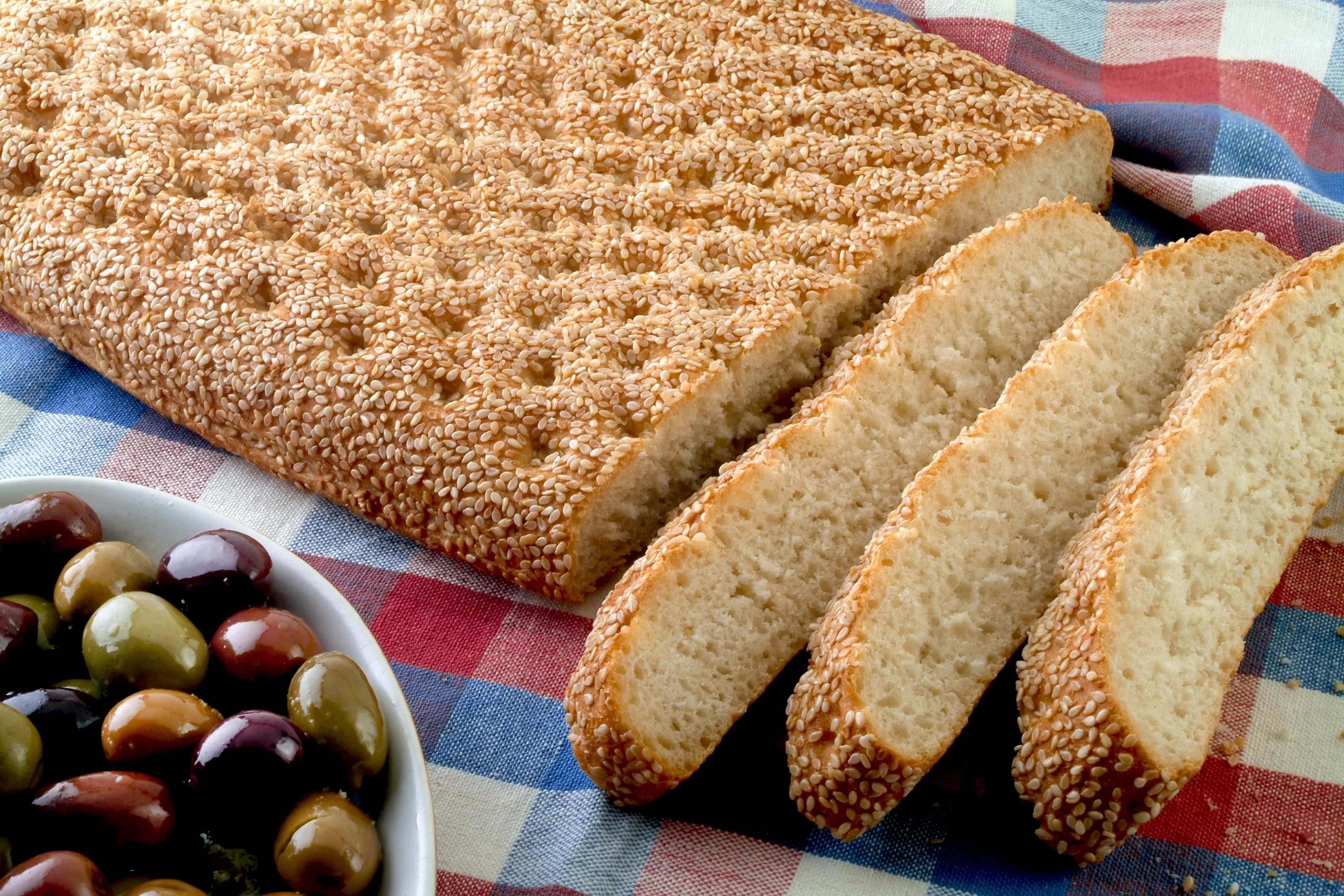Lagana
Lagana is unleavened bread, which means bread made without yeast. Shape-wise it is flat, with a crunchy crust and a little crumb. Its characteristic aroma comes mainly from sesame and anise. Its name derives from the ancient Greek “laganon”, a flaky pastry made of flour and water.
The history of lagana dates back to ancient times and continues to this day. Aristophanes in “Ecclesiazusae” mentions the word “Laganas”. In his texts, Horatio mentions that lagana is “The dessert of the poor”. According to tradition bread without yeast was used by the Israelites during the night of the Exodus from Egypt under the leadership of Moses. Since then the Mosaic Law has imposed on the Israelites the consumption of unleavened bread all the days of the Passover. The custom has been maintained, and so, usually after making lagana, Lent begins, the forty-day fast that ends on Easter, the day when Christ is said to have blessed the bread with yeast. The first day of Lent, the Clean/Ash Monday (called pure because housewives that day clean their utensils after the celebrations of Carnival), bakers prepare the lagana which we enjoy with a variety of meatless dishes.
From the dough of the lagana, we also make the so called Mrs. Lent, the figure of a woman with a cross on her head and hands in a prayer-like position with no mouth – symbolizing fasting – but having seven legs, one for each week of the period of Lent. Every Saturday we cut a leg counting in the weeks leading up to Easter.
In addition to Clean Monday, many choose to consume lagana throughout Lent as it is an extremely tasty choice accompanied with honey or tahini.
